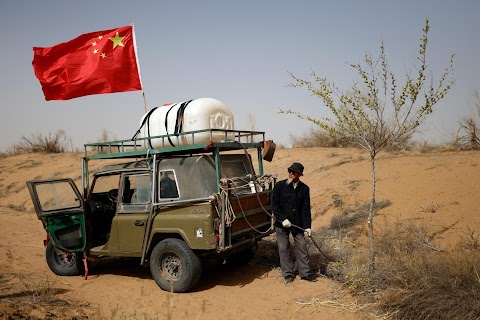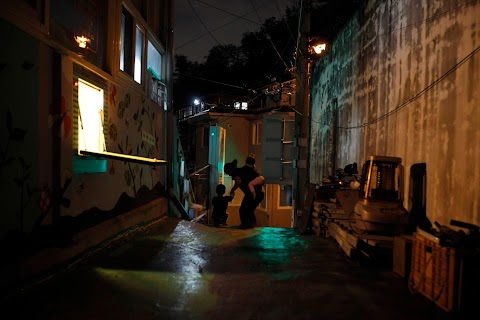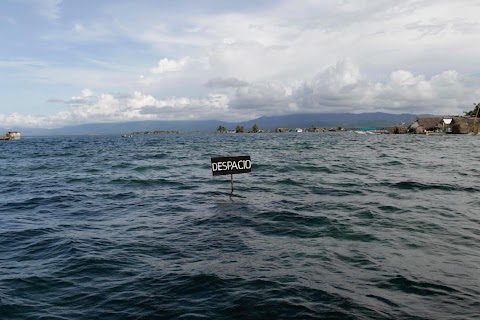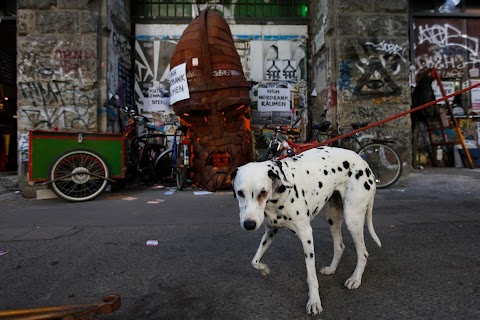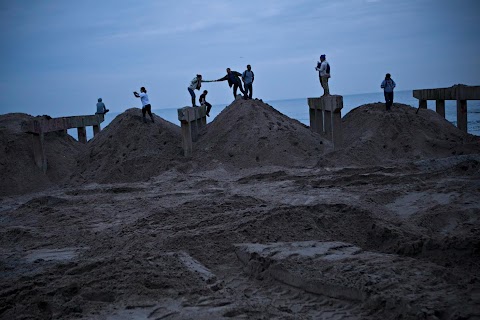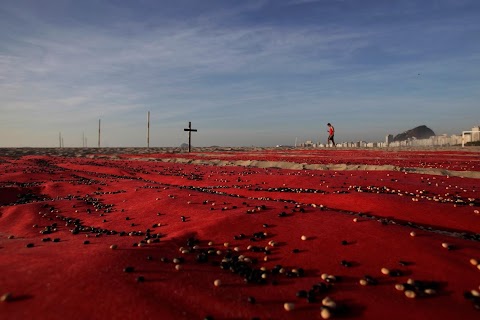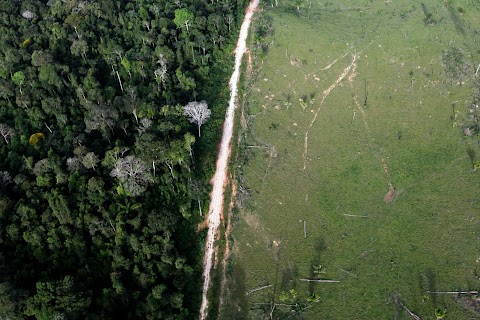
Cutting into the Amazon
 Nacho Doce
Nacho Doce
Brazil's Amazon is the largest rainforest in the world, the storehouse of one-eighth of the planet's fresh water and a primary source of its oxygen.
Protecting these precious resources was the focus of nearly two decades of federal environmental policy in Brazil. But the current administration is now rolling back regulation, making way for greater deforestation and development.

Sights like this clearing, which was felled by a timber company, may become more common under the current President Dilma Rousseff's government. In the 19 months since she took office, longstanding rules that curtail deforestation and protect millions of square kilometers of watershed have been reigned in. Rousseff issued an executive order to shrink or repurpose seven protected woodlands, making way for hydroelectric dams and other infrastructure projects, and to legalise settlements by farmers and miners.
The president is clear in her reasoning: Unleashing further development in the Amazon rainforest, an area seven times the size of France, is essential to maintaining the sort of economic growth that over the past decade lifted 30 million Brazilians out of poverty and made Brazil the world's sixth-largest economy.

Illegal deforestation, like this swath cut into the forest close to the Amazonia National Park in Itaituba, has potentially become easier under the current government.
In 2011, President Rousseff authorised a change that transferred much responsibility for environmental oversight from Brazil’s widely respected federal environmental agency, Ibama, to local officials. The government believes that locals are better-positioned to ensure that loggers and miners work legally. But others say local authorities lack the resources needed to police the Amazon and are more susceptible to intimidation and bribes.
Now, with few federal agents on the ground left to patrol the reserves, illegal destruction of the rainforest becomes apparent only once the area is big enough to be detected - cloud cover permitting - by satellites or rare and costly aerial surveillance. Because the state government grants the licenses for the lumberyards, federal officials inspect them less frequently now, too.

The current government's policies have opened up the way for plans to build 21 dams in the Amazon by 2021. Among them is a hydroelectric dam in Brazil's Amazonia National Park - the oldest national park in the region - on the Tapajos River. The project will inundate a large section of woodland upstream as well as the village of Pimental, where this woman washes her clothes, and which is home to about 800 fishermen and small farmers.
Slideshow

A man sits in the village of Areias in the state of Para. Para is the site of a controversial project to build the world's third-largest dam on the Xingu River - something which will displace thousands of tribespeople.

A boy walks down part of the Trans-Amazonian highway in Itaituba, gateway to Brazil's oldest national park and half a dozen nature reserves in the vast Amazon wilderness.

Sebastiana de Sousa and her son Antonio Sousa pose for a photograph inside their house next to the Trans Amazonian highway.

Youths herd cows near the village of Areias, deep in the Amazon rainforest.

Two men walk in the village of Novo Horizonte near the Trans-Amazonian highway.

A boy looks at children playing football in the village of Pimental, which will be flooded by a planned hydroelectric dam on the Tapajos River.

A woman arranges flowers inside a church in Pimentel. Villagers there are angry that the government has yet to provide details about the dam, whether they will be moved or compensated, or how the process might unfold.

An elderly woman rests next to her grandchild in a hammock inside their house in Pimental. Some villagers here recently chased contractors for the electric company out of town and destroyed concrete markers the workers placed in the area.

A group of children watch television in the village of Areias.

A girl bathes outside her house in Areias.

A boat appears dwarfed on the massive Tapajos river. The river's rapids are renowned as a habitat for many species of exotic fish, a key transit point for migratory catfish, and a source of water for endangered wildlife including jaguar and the ararajuba, or golden parakeet.

A man carries a bucket with fish from the Tapajos river in Pimental.

An aerial view shows illegal deforestation close to the Amazonia National Park.

